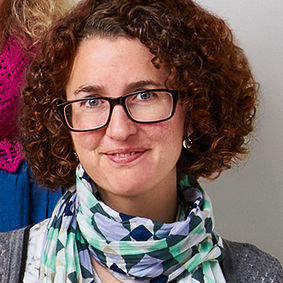The knitwear designer Karie Westermann has become popular around the world thanks to her elegant, thoughtful patterns, her entertaining blog, and her expert knitting workshops.
Born in Denmark and now based in Glasgow, Scotland, Karie came to the attention of many knitters through her ‘Doggerland’ e-book. Karie’s first printed book, ‘This Thing of Paper’, was published in 2017, and she has also contributed patterns to a range of knitting magazines and yarn companies.
She spoke with Helen Spedding about her design career for a special interview in The Knitter, to accompany her ‘Ard Daraich’ shawl, and we can bring you the full interview here.
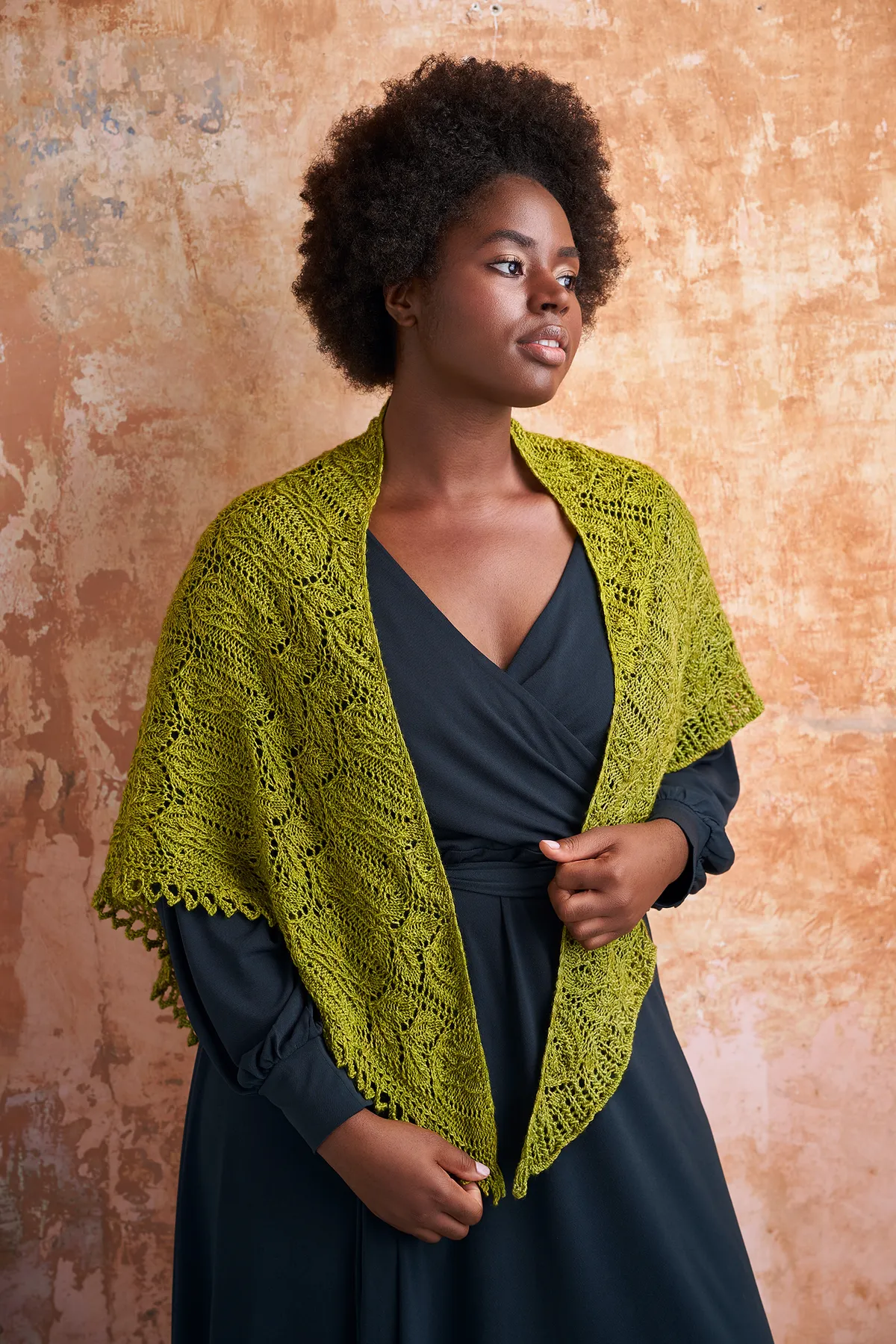
Q: I first fell in love with your work back in 2013, with the publication of your ‘Doggerland’ collection - it was fascinating to see how your designs reflected Mesolithic landscapes and artefacts now lost beneath the North Sea. Is it important for you to tell a story with your knitting patterns?
A: “Story-telling is always a big part of my work. I think of textiles as texts. Obviously, we write our own stories into a fabric we are making (‘I made that shawl while I was travelling with my aunt’ or ‘I bought the yarn for that hat because I was very upset that day’), and I think of the stitches we make as being rather like words formed by handwriting (and just like handwriting, our gauge is something very unique to us!).
“But I also think of textiles and texts in a larger sense. There is a shawl in the Doggerland collection, ‘Vedbaek’, which was inspired by a Mesolithic burial. A very young woman had been buried together with her baby — and the baby had been resting on a swan's wing. There is something so protective and caring about that image: a mother wanting to shelter her child, even after death. Swans are obviously protective of their young, and their wings are powerful and strong. So, I sat down and thought about how I wanted to design a shawl that would lend comfort and protection. I wrote ‘Vedbaek’ so the knitting experience would be comforting and relaxing (it has a good rhythm to its construction), I urged people to knit the shawl in a yarn that felt good and comforting in their hands, and the shawl itself was designed to shelter its wearer from storms and hard times. And it looked like an outline of a swan's wing.
“So, the story-telling aspect is always a huge part of my designing. I often start with a story I want to tell — whether it's the human instinct of wanting to protect loved ones or another story — and then it's my task to try and interpret that story in stitches. I'm a relatively slow designer for this very reason. I want to find a kernel of truth in my stories, but also make my designs wearable. You don't always need to know the story behind the design. I feel really happy every time someone tells me, ‘oh this is beautiful’, and then they find out there is a story there that they can connect to.”
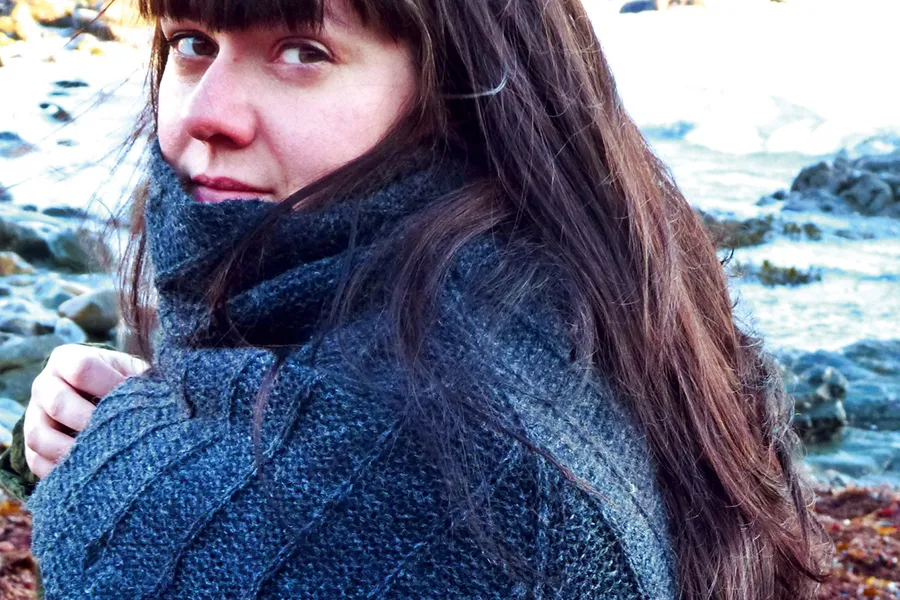
Q: The publication of ‘This Thing of Paper’ was one of our highlights of 2017. Can you tell us a little bit about the process behind its development?
A: “Before I became a knitting designer, I was a failed academic. I used to work in a field called ‘print culture’ and I was really fascinated by the period between Johan Gutenberg's printing press and when print became widespread in Western Europe. The Chinese had invented moveable type, but Gutenberg made a huge impact in Europe. Manuscripts had been labour-intensive to produce and printed books were just that much faster and cheaper to make. Books became easier to obtain which led to knowledge being easier to share. That shift from handmade to machine-made really fascinates me — both on an academic level but also as a maker.
“I drew a lot upon my academic background and my book contains a bibliography. Getting the tone of the book right was hugely important to me. It needed to be accessible, while still remaining accurate. One of the highlights of my research for ‘This Thing of Paper’ was going to Mainz, Germany to work with the Gutenberg Museum. I examined copies of the Gutenberg Bible as well as other books he printed — they were in a bank vault and I was closely watched by a guard! My book ended up being the first knitting book in the Museum archive, which is hugely thrilling. I also tried printing on a replica 15th century printing press and cast my own type as part of my research.
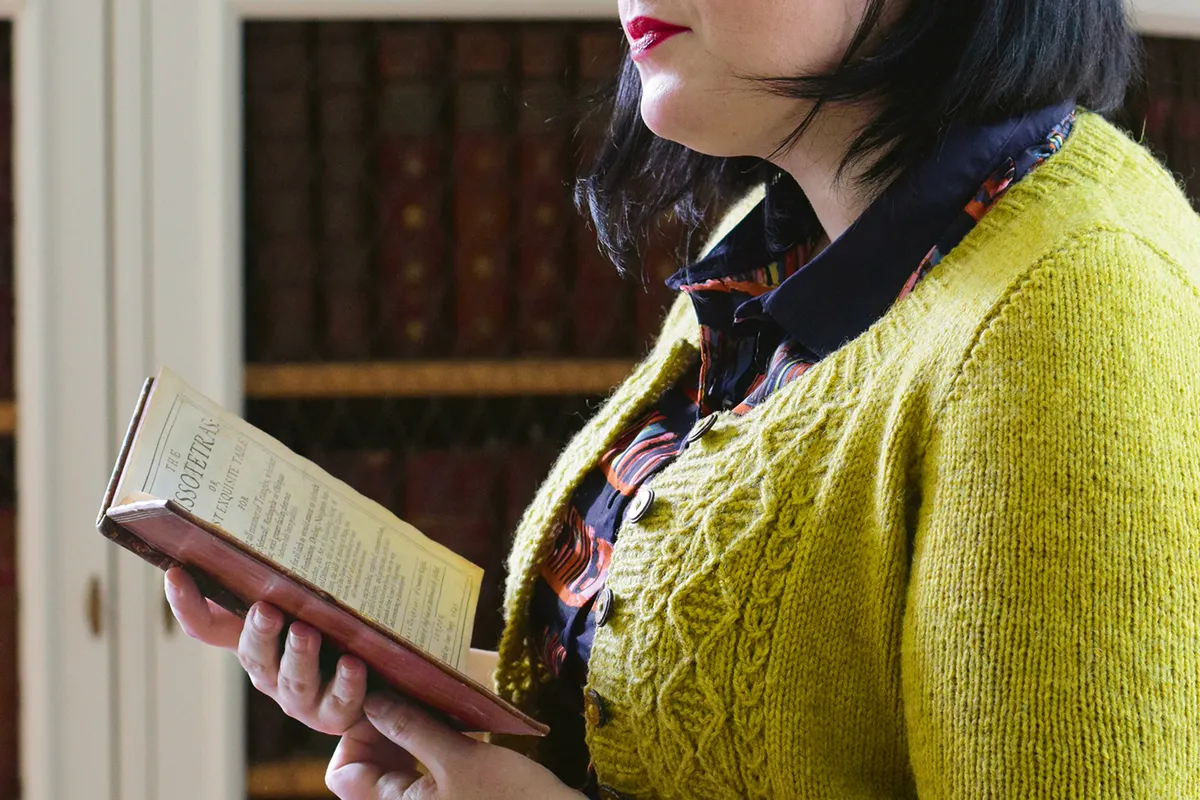
Q: How did you find the experience of using Kickstarter to enable the publication of ‘This Thing of Paper’?
A: “I was blown away by the whole experience! People had urged me to do a Kickstarter for some time, and I decided to do one just to get everybody off my back! I could not have imagined the response I received and the massive amount of support I got. It was truly humbling. I made some lifelong friends thanks to the Kickstarter.
“Looking back, there are some things I would do differently. Writing a book and designing patterns are things I found surprisingly straightforward, but I've learned that I need to ask for help with everything else. Distributing a book to thousands and thousands of people is extremely hard, physical work, and I'd urge any aspiring authors to get people to help with that. I assembled a wonderful team — editors, graphic designers, printing house, and an assistant — and I'd get them involved at an earlier stage. We live and learn.”
Q: Would you say your work reflects your Danish heritage, or do you draw more inspiration from Scotland and its knitting traditions, given that Glasgow has been your home for a long time?
A: “There is a definite Scandinavian aesthetic and it is hugely important to me both as a designer and as a crafter: a controlled palette, fairly minimalist, and decidedly non-fussy. I'm a big fan of clean lines and I can spend a lot of time thinking about the right shade of off-white. I find that my core design vocabulary — in Danish known as ‘formsprog’ — is very Scandinavian and I'm very aware of that.
“On the other hand, I have lived in Glasgow for many years and the city has definitely changed me. It's a very vibrant and creative city, steeped in art and architecture. I can spend a lot of time people-watching because people wear such wonderful, personal outfits. The light is very different in Glasgow to the light in Denmark. The latter is usually blue- or grey-tinged, which means hues tend towards the cooler side of the palette, while I work a lot with warm colours now I live in Glasgow.
“My personal design style is definitely an amalgam: I love clean and unfussy lines, but I play a lot with bold colours and patterns. It's Denmark and Glasgow in one fell swoop.”
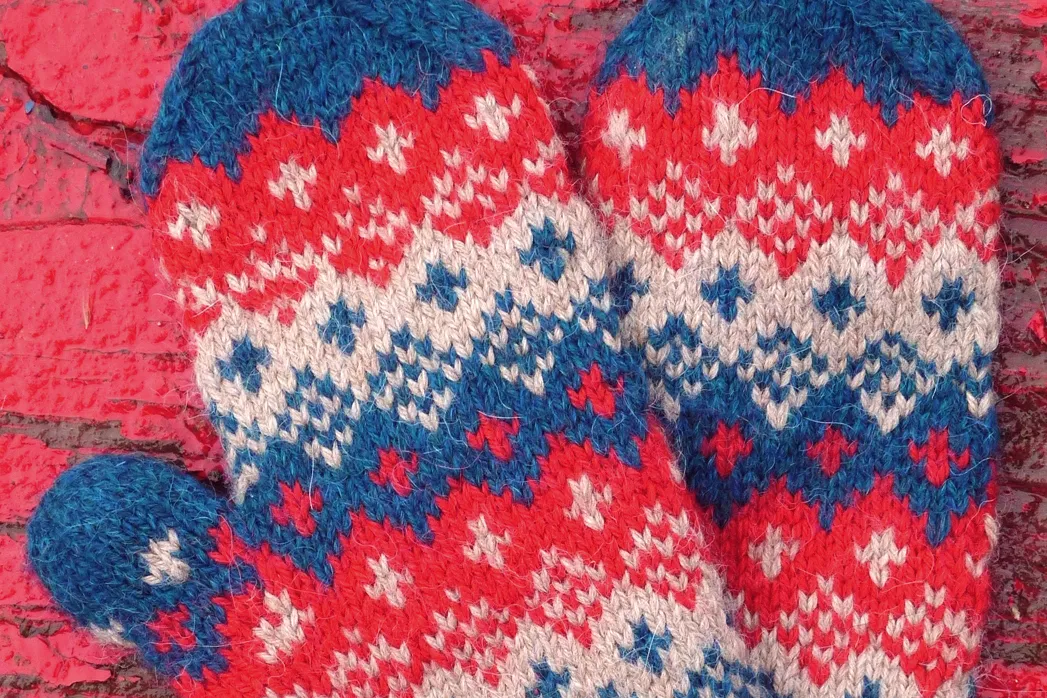
Q: Are there particular design themes which you find yourself being drawn to time and again?
A: “Absolutely. I keep thinking about how we embed stories into our making and how textiles and texts are intertwined (and just how many textile-based metaphors we have in English). Sometimes we don't have words to describe our feelings and we turn to knitting to find solace and a way of expressing ourselves: I think a lot of us have knitted in a hospital waiting room or found our way through grief by knitting a scarf we'll never wear. I recently mended a cardigan that my gran had knitted for me before she was diagnosed with dementia. I cannot fix her, but I could fix the holes in the garment. So, that preoccupies my thoughts on knitting and making and designing.
“I am drawn to lace design. It is probably my favourite thing to design and I find it very intuitive. The challenge is always this: how do I keep this lace pattern from being too fussy or overworked? How do I pare it down to its essentials? And how can I place it in a context that adds to its beauty rather than detracts from it?”
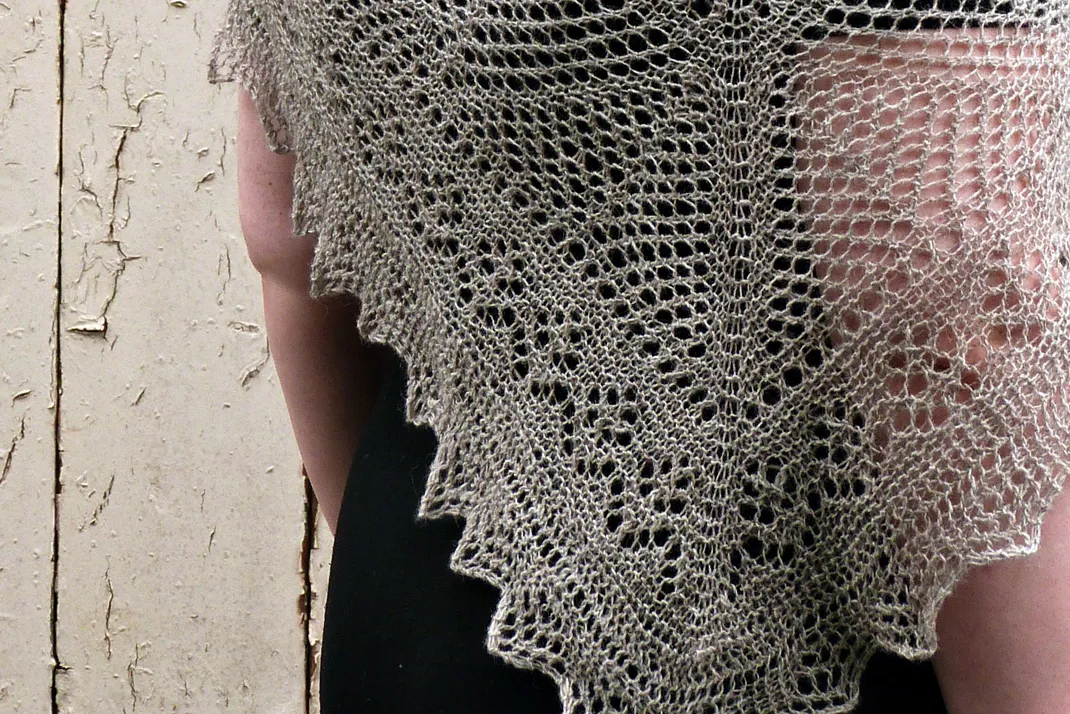
Q: What, for you, are the best things about being part of the knitting community?
A: “The knitting community is full of vibrant, interesting, smart people! Thanks to my job, I get to meet some of the most amazing people. Everybody has a reason why they are drawn to knitting and learning people's stories is a massive privilege. I learn a lot from everybody I meet, and I get to hear some very personal and touching stories. I always love opening my emails and hearing that someone's knitted one of my patterns for a wedding, a christening, or a special birthday. It is truly humbling.
“Knitting something takes a lot of time and knowing that people choose to knit from my patterns thereby making me a small part of their life… well, that is special.”
Q: If you were stranded on a desert island, what’s the one yarn and pattern book you would choose to take with you?
A: “I'd grab some undyed, rustic 1ply yarn, 4.5mm needles, a pen and a sketchbook. And then I'd design shawls inspired by the desert island. I like to respond to places and landscapes in my designing, and making something unique to the desert island seems like an obvious response!”
Q: What yarns have you seen lately that you’re keen to swatch and design with?
A: “At the moment I'm really drawn to two types of yarns. First, yarns that comes from specific farms and flocks (it is the story-telling element again as well as my obsession with landscapes). I recently worked with Whistlebare's Yeavering Bell which is a gorgeous mixture of Wensleydale and mohair from their own flock. And I have my eye on their Cheviot Marsh. Hawkshaw Sheep, New Leaf Yarns, Lammermuir, South Downs Yarn, Croft 29, Uist Wool… there are so many incredible small yarn producers out there and they are doing such exciting work.
“And the other type of yarn comes from UK indie dyers. There are some dyers out there who produce fantastic, distinct work. Brambles & Me, Mint Bee, Ducky Darlings, Phileas Yarns, River Knits… again, I have a list so long that I could fill the entire magazine just by listing the wonderful dyers I have spotted!”
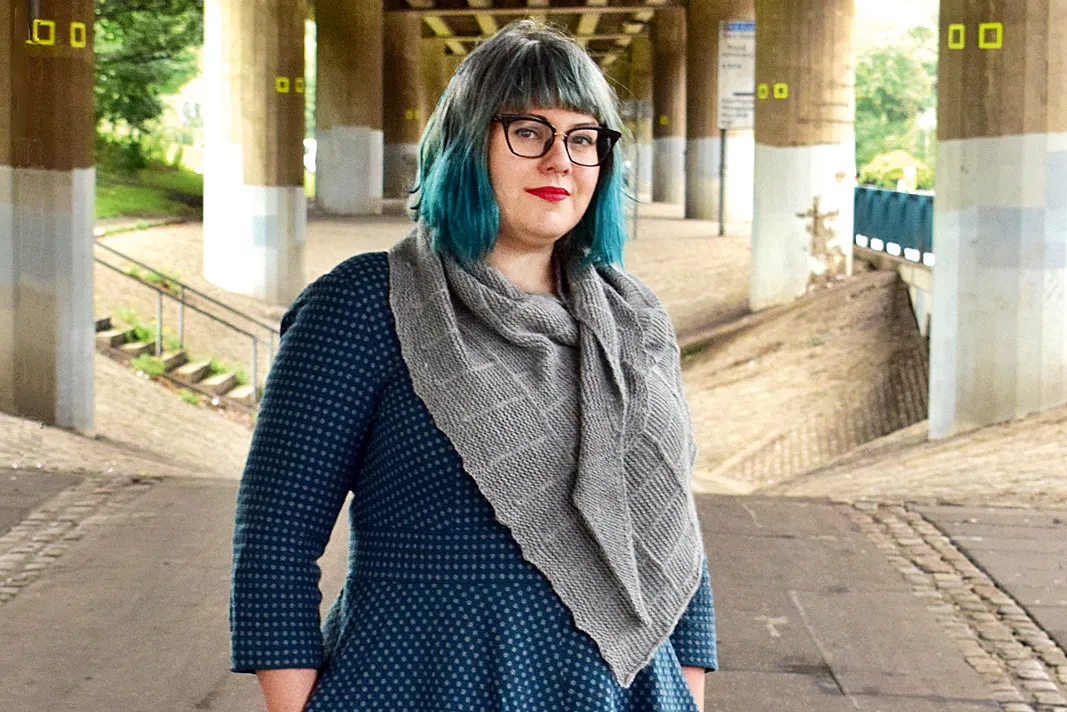
Q: Can you tell us a little bit about some of your most recently published designs?
A: “’Shawl for An Art Lover’ means the world to me. I designed it for my wedding and I wanted to make something that was beautiful and also imbued with meaning. The pattern motifs are inspired by the city in which I live: Glasgow, Scotland. The delicate lace takes its cue from the sinuous Art Nouveau lines of Charles Rennie Mackintosh’s iconic architecture, while the solid strip with Estonian nupp/lace stitches calls back to the tenement tiles seen in the 19th century apartment blocks throughout Glasgow. The pattern is named after House for an Art Lover, a Glasgow house designed by Mackintosh himself. I made my own shawl in Rowan Kidsilk Haze as I used to work for Rowan and it was a nice way of adding that part of my life to the day.
“'Vinterskov’ was an unusual design process for me. I bought some yarn in Denmark and it had been sitting there — one of those 'too precious to use' yarns — and then I decided I needed a wonderful, warm jumper to get me through winter. I'm usually such a slow designer but I wrote and knitted that jumper in a fortnight — and I lived in it all winter long. I wanted a wintery jumper, but not an Xmas novelty one, and I think I succeeded.
“And, finally, ‘Canny Lass’ came about because I had some Whistlebare Yeavering Bell 4ply in my hands and I wanted to design a shawl that showcased the yarn. It was one of those designs where the yarn guided me. The lace is very subtle and it is such a super-feminine shawl too. I was planning my wedding while I was working on it and I think that rubbed off!”
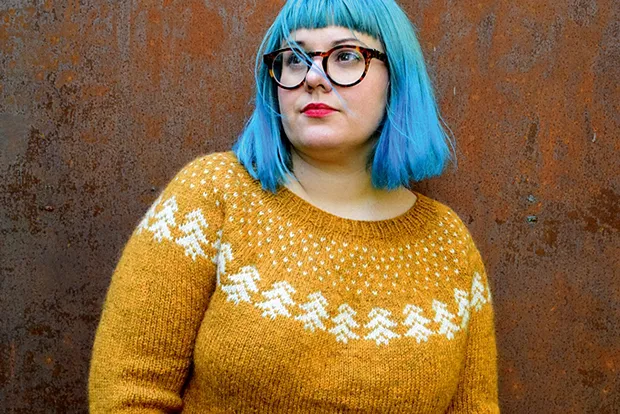
Q: What do you have on your needles today?
A: “Right now I have a jumper in some stunning undyed yarn. It's a slow project because it doesn't have a deadline and I love taking my time with the yarn. It has a slightly unusual-for-me silhouette and I'm excited about wearing it next winter.
“I also have a shawl in Gamercrafting yarn. Angie dyes yarns inspired by geeky pop culture and we thought it would be fun to try a collaboration because people don't tend to know how geeky I can be too. I do have a strict deadline for that one! And it does have a story.”
Q: Do you have any plans for 2019 and beyond that you can share with us?
A: “I recently launched a Patreon to allow myself more writing time. I find that writing helps me crystallise my design work, but it's often hard to allocate writing time. So, I'm sharing longform pieces on Patreon and I am working on something I called The Everyday Wardrobe Project which Patreon users will be able to see take shape.
“I've also begun to work on my second book, but only tenatively. I am trying to chip away at some ideas to see which ones will carry enough weight for an entire book (sometimes an idea can spawn two good designs, other times there are 25 good designs in an idea).
“And I'm working with Arena Tours on knitting holidays, including a cruise of Sweden’s scenic waterways in May-June 2020.”
Find out more about Karie's work at www.kariebookish.net.

